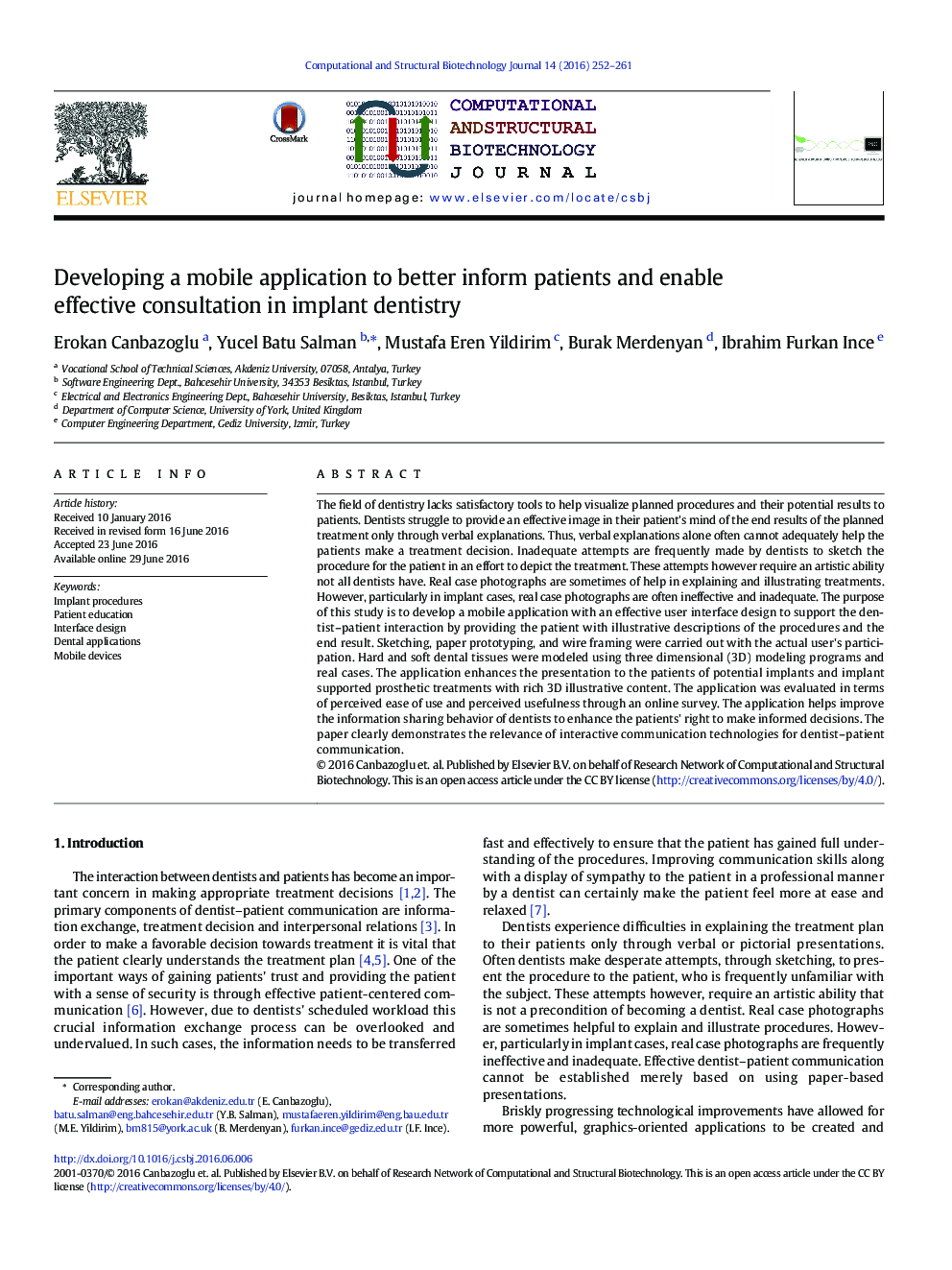| Article ID | Journal | Published Year | Pages | File Type |
|---|---|---|---|---|
| 2079097 | Computational and Structural Biotechnology Journal | 2016 | 10 Pages |
•Presents a case study using user-centered development methodology•The quality of doctor patient interaction is an important driver of satisfaction.•Several patients are annoyed with bloody photos, particularly in implant cases.•Rich visual content by mobile devices has positive effect on user experience.•Actual users' participation into design is effective to reduce system complexity.
The field of dentistry lacks satisfactory tools to help visualize planned procedures and their potential results to patients. Dentists struggle to provide an effective image in their patient's mind of the end results of the planned treatment only through verbal explanations. Thus, verbal explanations alone often cannot adequately help the patients make a treatment decision. Inadequate attempts are frequently made by dentists to sketch the procedure for the patient in an effort to depict the treatment. These attempts however require an artistic ability not all dentists have. Real case photographs are sometimes of help in explaining and illustrating treatments. However, particularly in implant cases, real case photographs are often ineffective and inadequate. The purpose of this study is to develop a mobile application with an effective user interface design to support the dentist–patient interaction by providing the patient with illustrative descriptions of the procedures and the end result. Sketching, paper prototyping, and wire framing were carried out with the actual user's participation. Hard and soft dental tissues were modeled using three dimensional (3D) modeling programs and real cases. The application enhances the presentation to the patients of potential implants and implant supported prosthetic treatments with rich 3D illustrative content. The application was evaluated in terms of perceived ease of use and perceived usefulness through an online survey. The application helps improve the information sharing behavior of dentists to enhance the patients' right to make informed decisions. The paper clearly demonstrates the relevance of interactive communication technologies for dentist–patient communication.
